The biggest entertainment stories
Get our big stories about Hollywood, film, television, music, arts, culture and more right in your inbox as soon as they publish.
You may occasionally receive promotional content from the Los Angeles Times.
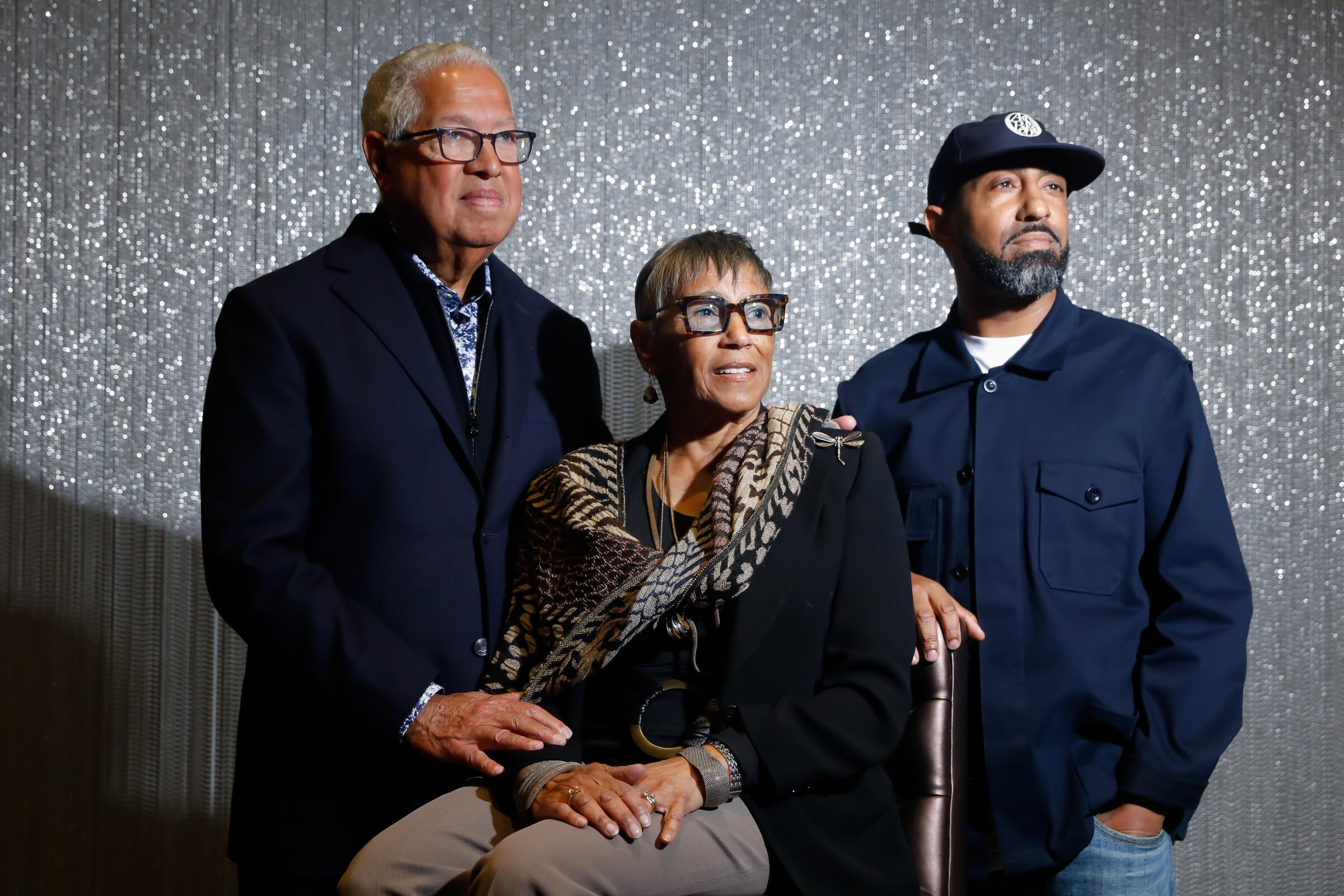
“I’ve got a story for you.”
If you spend more than five minutes with Bernard Kinsey, 79, you’re guaranteed to hear this refrain, because he has thousands of stories.
For five decades, the gregarious collector and his wife, Shirley, 77, have amassed the Kinsey African American Art & History Collection, one of the world’s largest private collections of Black art and historical objects.
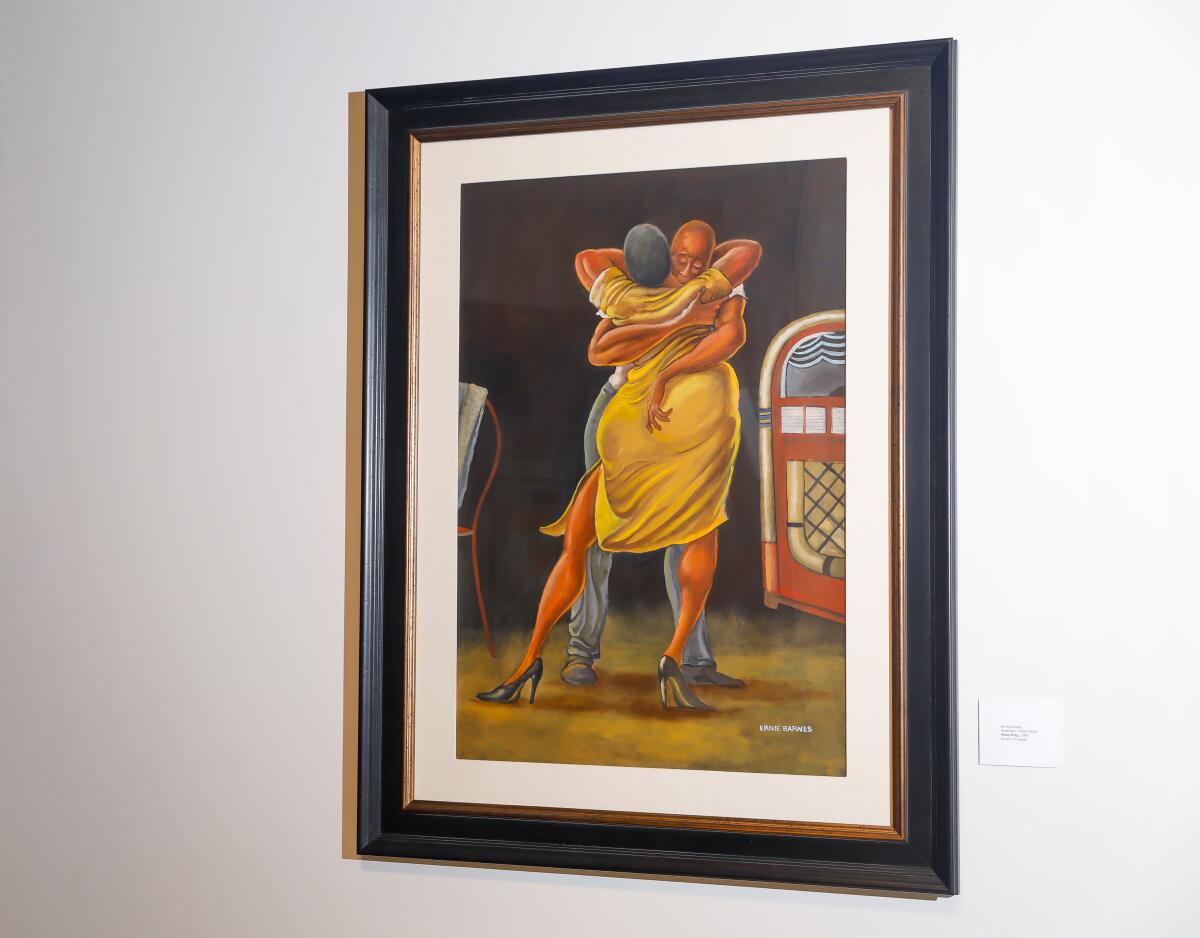
Lend him your ear and Bernard will tell you how he secured a 1963 typed letter from Malcolm X to Alex Haley after initially missing out on the auction where the correspondence sold, or he’ll describe the shivers he felt upon first opening a FedEx envelope that contained one of his earliest acquisitions, an 1832 handwritten bill of sale for an enslaved Black man.
These documents, among others, are on display in the Kinsey Collection Experience at SoFi Stadium, the first art installation to be displayed at the Inglewood sports and entertainment venue. Curated by their son Khalil, the creative director and general manager of the collection, the exhibit opened in February 2022 in honor of Black History Month and was extended an additional year. It will now be on view through March 2024.
Among the items on view along the arena’s wide Level 2 corridor are a copy of a 1595 baptism record from St. Augustine, Fla., and a 1773 book of poems written by the boundary-shattering poet Phillis Wheatley. There’s the World Series ring of Angeleno Emmett Ashford, the first Black umpire in Major League Baseball, as well as a 1924 photograph of 28 Black Los Angeles firefighters (“I didn’t believe there were that many Black firemen in L.A. today!” Bernard quipped of his 2021 purchase.)
For the record:
8:41 a.m. April 10, 2023A previous version of this story noted that the collection featured an original 1595 baptismal record. The story has been updated to reflect that it is a copy.
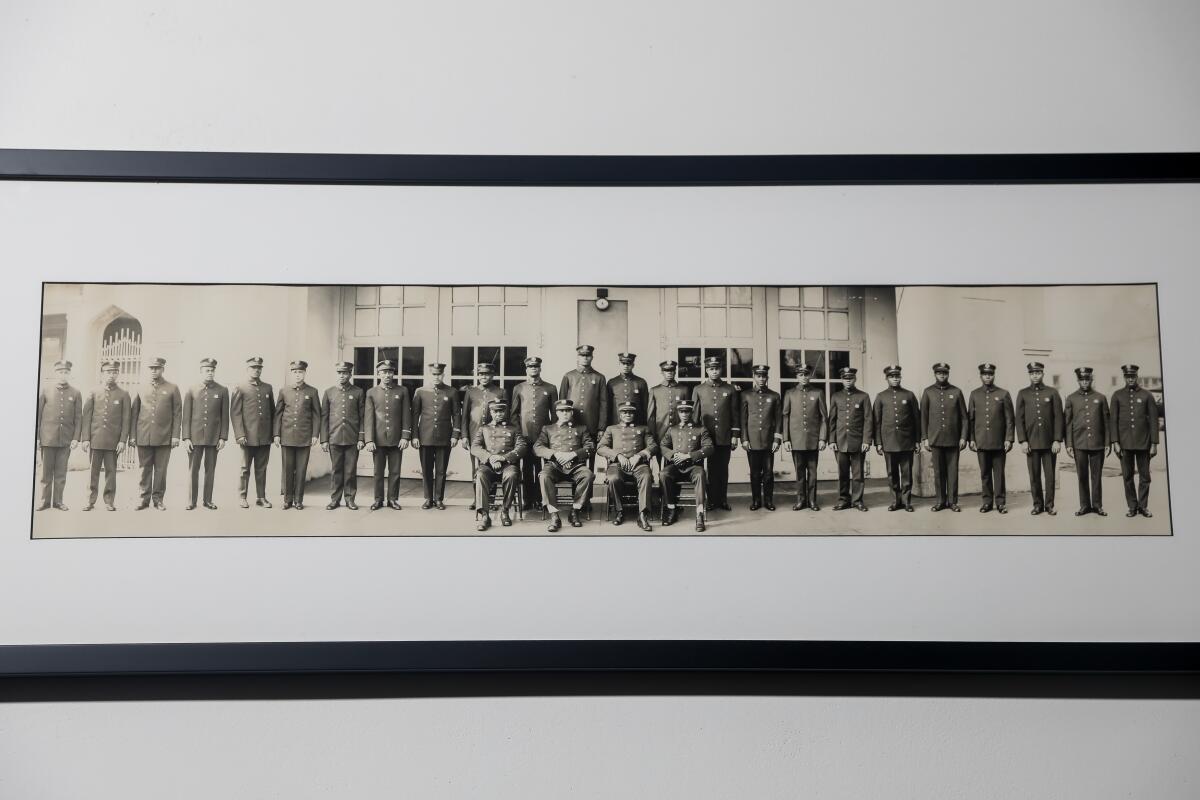
From scientist Benjamin Banneker’s 1796 Almanac to a 2006 quilted portrait of a Black female fieldworker by textile artist Bisa Butler, there’s a trove of art and artifacts that speak to the strength, resilience, ingenuity and creativity of African Americans dating back to before the nation’s birth.
“As you see these objects,” Bernard said during a recent tour of the exhibition, “you’ll change your opinion of the African American story because everything we got in the history books didn’t have us in it. Khalil says it’s like being Photoshopped out of the picture.”
“You ought to see the schoolkids who leave here,” Bernard continued. “Their heads are shaking because it changes what they think about themselves and what they’ve been taught.”
Jason Witt, the senior director of community affairs & engagement for SoFi Stadium, estimates more than 4,000 Inglewood Unified School District students visited the exhibition in its first two months alone. “You’d see a lot of eyes go wide and hear a lot of ‘For real?’ and ‘What?!’” Witt said, recounting instances of local high school visitors first learning that prominent Mexican historical figures Vicente Guerrero and Pío Pico were both of African descent. He found that hearing about “the intertwining of Black and Brown cultures” as far back as the early 19th century, “sparked a lot of questions for them.”
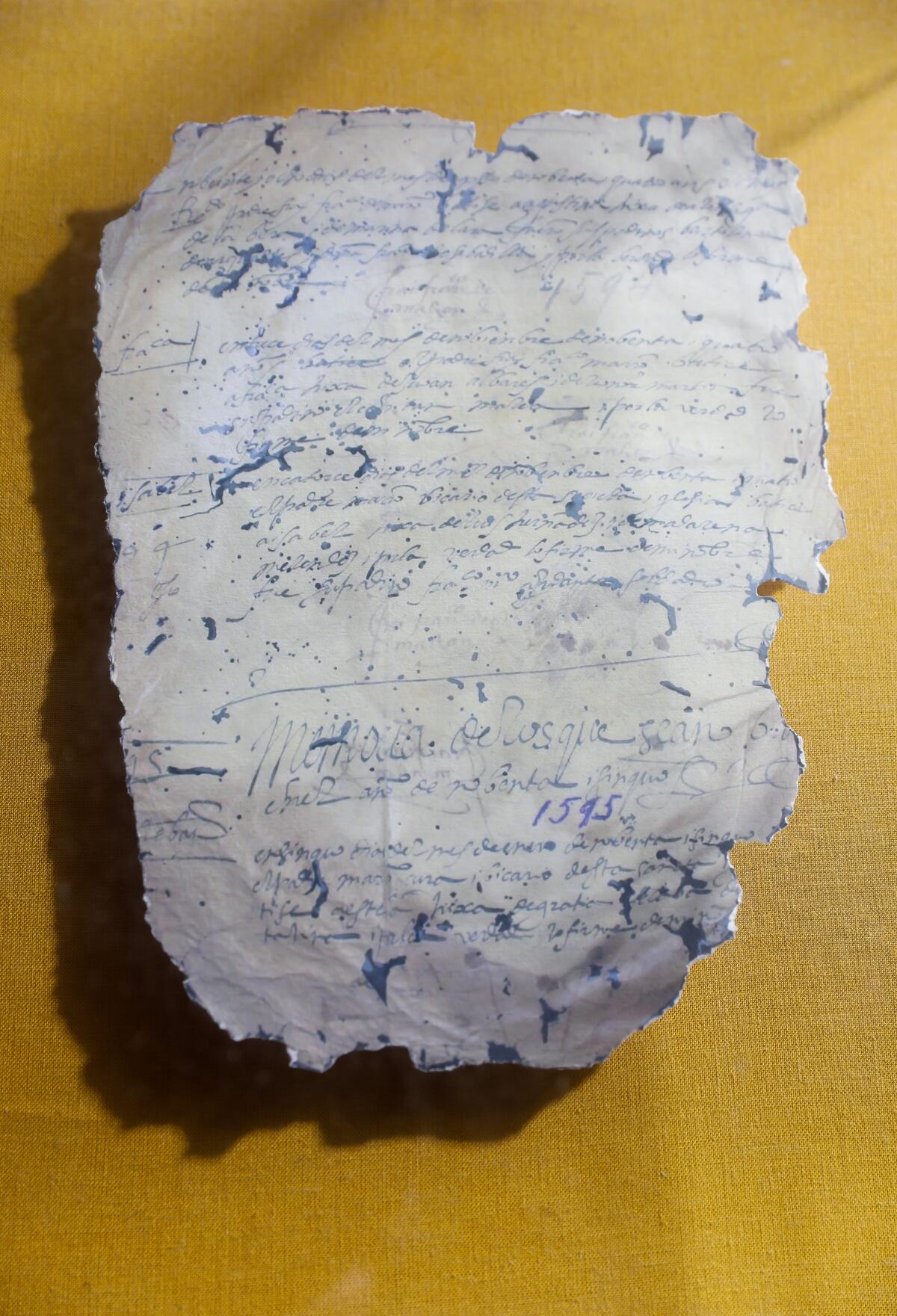
SoFi Stadium features about 10% of the family’s collection of art and artifacts, which is estimated at more than 700 pieces. While many pieces are kept in storage, about 25% are kept inside the Kinsey’s two-story Pacific Palisades home, nestled inside built-in book nooks, hung above a fireplace or potted dragon tree, resting atop end tables and clustered together on the floor.
“You gotta live with stuff,” Bernard said as the couple moved from room to room during a subsequent home visit.
He pointed out Laura Wheeler Waring’s 1941 oil painting “Woman With the Orange Scarf” hanging in the dining room across from a 1924 still-life by abstract art pioneer Alma Thomas, as though the two groundbreaking artists are in conversation (the former would famously paint a portrait of the latter in 1947). In Bernard’s home office, above a desk strewn with note-filled legal pads, there’s a 1972 painting of a pool player, one of several Ernie Barnes paintings in their collection. And on the second-floor landing, there’s a 1995 watercolor by Pennsylvania artist Dane Tilghman, as well as three individual family portraits painted by L.A. artist Mikel Alatza in the aughts.
“I want all the old stuff and she wants all the new,” Bernard joked of the pair’s collecting predilections. “So, I said, ‘Baby, you take that lane, I’ll get this lane.”
Bernard’s most beloved “old stuff” is kept in a small study off the foyer. Here, he’s considerably more cautious. “I’m gonna put my gloves on for this,” Bernard said, before pulling on a white cotton pair, then picking up a 1967 funeral program memorializing the poet Langston Hughes. He kept those gallery gloves on to handle their “scary rare” 1882 edition of “The Life and Times of Frederick Douglass,” but he still wasn’t being delicate enough for Shirley’s liking. “Careful. You’re turning pages too fast, Bernard,” she warned.
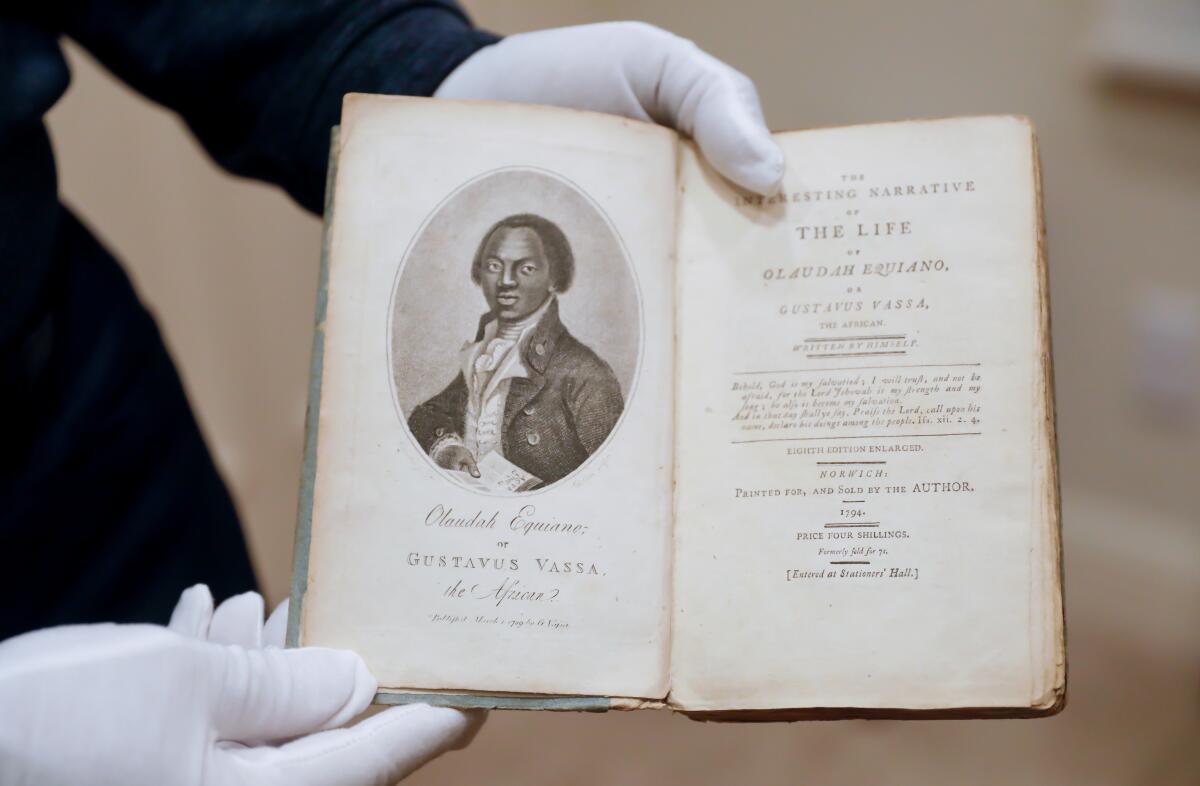
Some of the antiquities are kept in plastic sleeves or encased in acrylic boxes, resting in the drawers of vintage wooden desks and cabinets. Old tintypes sit on top of a 19th-century Singer sewing machine handed down from Shirley’s grandmother. And some framed items are swaddled in bubble wrap, lying on the floor waiting to be hung.
Historian Charles L. Blockson’s 1990 tome “Catalogue of the C.L.B. Afro-American Collection” has pride of place on a wooden bookcase. “This is my bible,” Bernard said of the historical text that has inspired many of his artifact searches. “[Blockson’s] my hero because he did it before it was fashionable.”
Bernard and Shirley Kinsey built their home around a collection of works that speaks to the storied history of African Americans.
The Kinseys’ African American collection joins a considerable amount of Indigenous masks, statues and woven baskets that they’ve gathered on trips to national parks across North America, as well as a gallery’s worth of objects found during their travels to Australia, China and across sub-Saharan Africa. After watching Alex Haley’s television miniseries “Roots,” in 1977, and the birth of their son, they began to shift their focus to include cultural markers of the Black American experience. Shirley recalled having a wake-up call during that momentous viewing: “We were just like, ‘OK, we know about all of these other cultures. We need to learn more about our own.’”
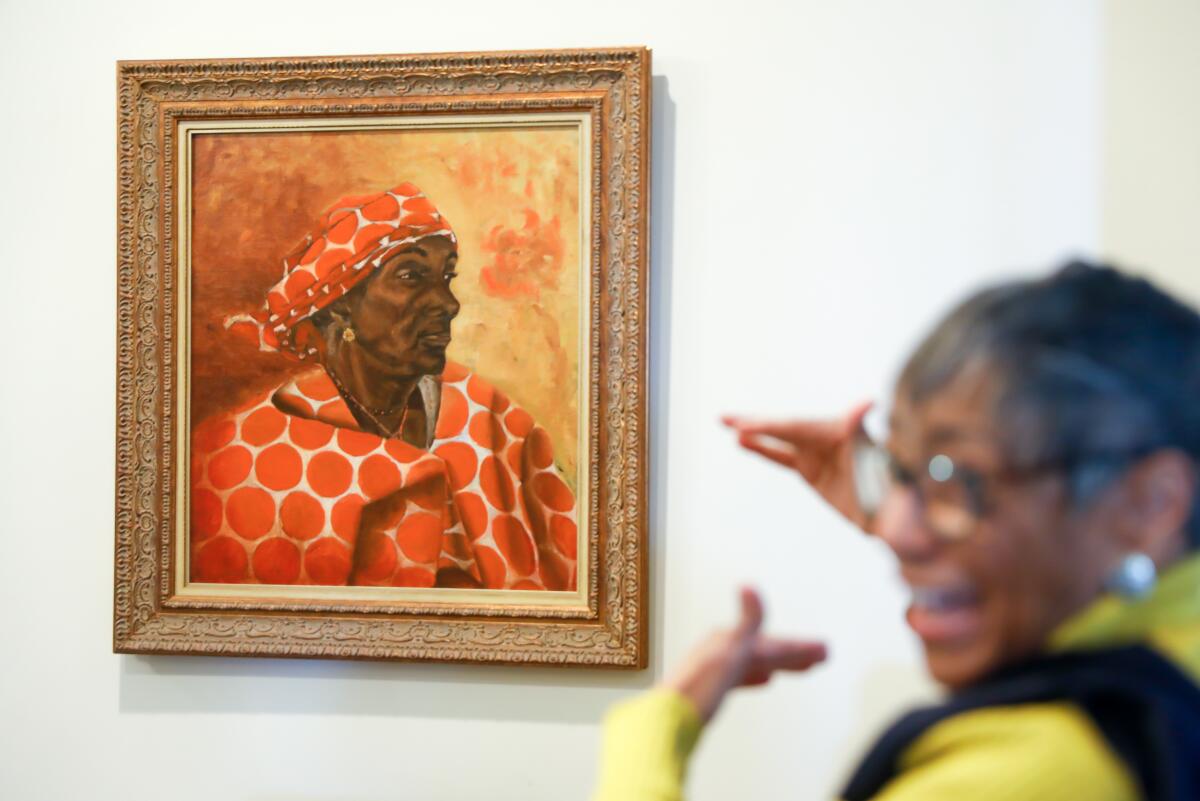
The couple credits their advisor, artist and art historian Edward Pratt, with helping them identify significant artifacts and source coveted finds, noting that for the past 25 years, he’s been responsible for informing their “understanding of the connection between art, history and culture.”
“It’s unbelievably difficult to acquire this stuff because it ain’t about money,” Bernard said, adding “it’s about your knowledge and your persistence.” While he recounted tales of asking a painter to sell them a creation before it was even completed, or calling fellow collectors incessantly for months or decades in pursuit of a coveted first-edition book, Shirley filled in dates, cities or names that he couldn’t remember.
They’ve been on this collecting journey together since they got married in 1967. Both born and raised in Florida, they met as students at Florida A&M University. He is a retired Xerox executive who also co-chaired the Rebuild L.A. initiative in the wake of the city’s civil unrest in 1992. She taught at a Compton elementary school before becoming a Xerox training manager, then a project manager for an L.A. real estate development firm.
“We really worked for every dime of this,” Bernard said. Shirley echoes his sentiment: “We didn’t inherit this.”
“My whole entire upbringing, my parents were tour guides, essentially, sharing the power of these things they’d collected,” Khalil said. “[It was] never from a place of ‘Oh, look what we have!’” It was more of, ‘Look what you can do.’”
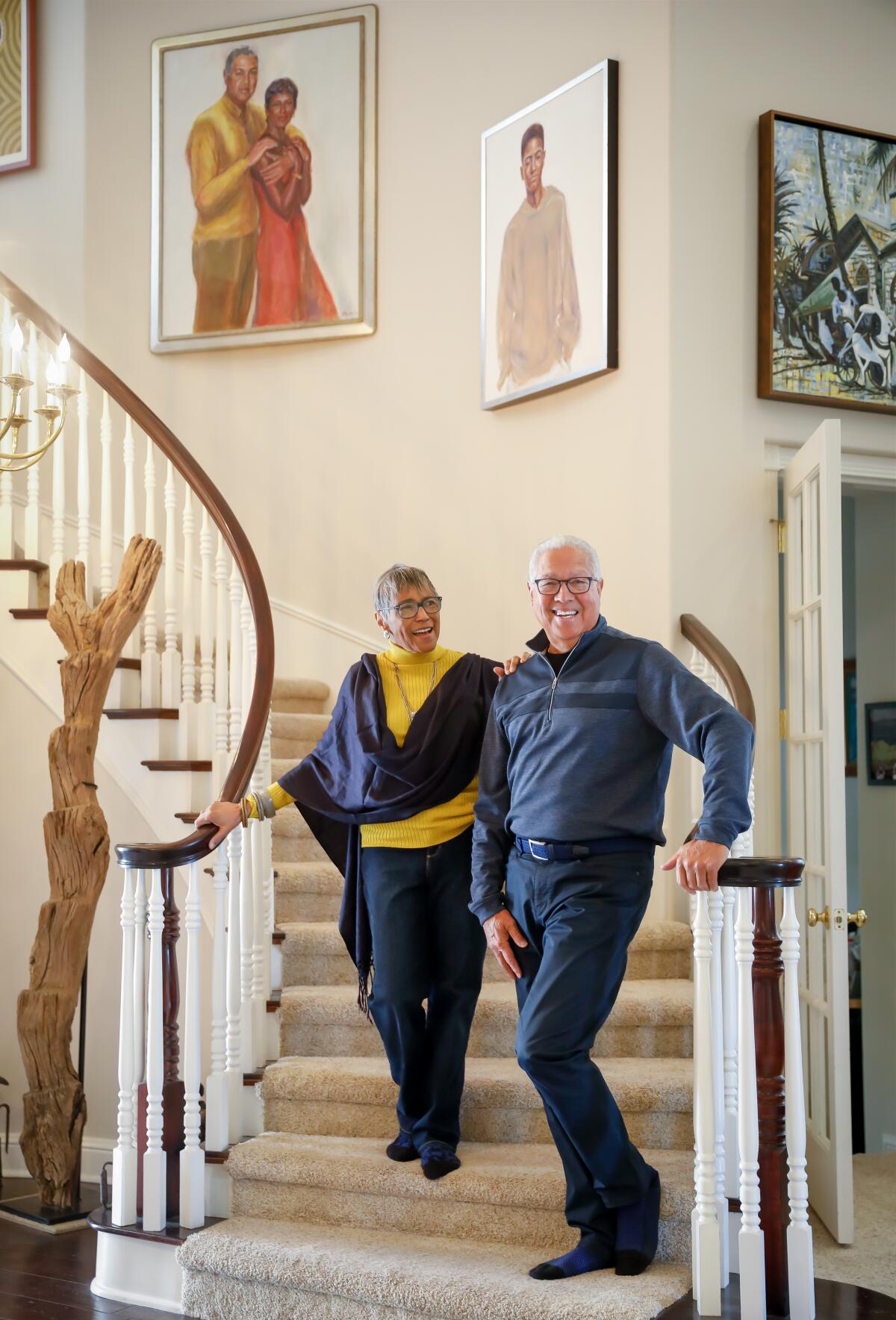
As Khalil organized which items from the collection would be removed or added to the newly extended SoFi exhibition, Shirley delighted over the thought of some of the on-display pieces finally “coming home.” Bernard has set his sights on the next pieces he hopes to acquire, including an elusive 1829 antislavery document, David Walker’s “Appeal.”
“Imagine coming to a game or concert, not knowing this is here,” Khalil said of the SoFi Stadium exhibition, adding, “As soon as you come down the escalator, this is not just SoFi, this is now a museum experience.” In that regard, he views the venue as a “Trojan Horse” through which the Kinseys “embed the stories of these lesser-known, unknown or unrecognized people who have done so much.”
SoFi Stadium is supposed to have a great public art program, but works by Black artists are in limbo. Also missing: the historic sculpture of Swaps, the record-setting thoroughbred from Hollywood Park.
When Dr. Tiffany E. Barber, a curator, writer and UCLA professor of African American art, attended the opening of the SoFi Stadium exhibition, she was particularly drawn to the works of such 19th century Black landscape painters as Edward Mitchell Bannister and Grafton Tyler Brown. “At a dinner conversation a few years ago,” she recalled, “a white male writer tried to argue that there was no African American tradition of landscape. The rare works in the Kinsey Collection clearly refute that erroneous notion.”
Considering the collection on a whole, Barber feels it is “remarkable in that it contains both historically important print and material culture artifacts, as well as significant works of modern and contemporary art that offer a complex visual picture of African American life across time and space.”
Heading into the year-long exhibition extension, Khalil is removing eight of the more fragile pieces from display for preservation purposes, including an 1857 copy of the U.S. Supreme Court’s Dred Scott decision and a 1954 copy of its Brown vs. Board of Education decision. Among the dozen or so additions that will be on view by early April, there’s a first edition of Booker T. Washington’s 1901 autobiography “Up From Slavery,” a signed 1997 lithograph of artist Faith Ringgold’s 1991 fabric painting ”The Sunflower Quilting Bee at Arles,” and a 1941 edition of The Negro Motorist Green Book.
“We’ve been detectives, anthropologists trying to change the narrative about Black people in this country,” Bernard said.
“To know this history is to know who you are. It’s just that simple.”
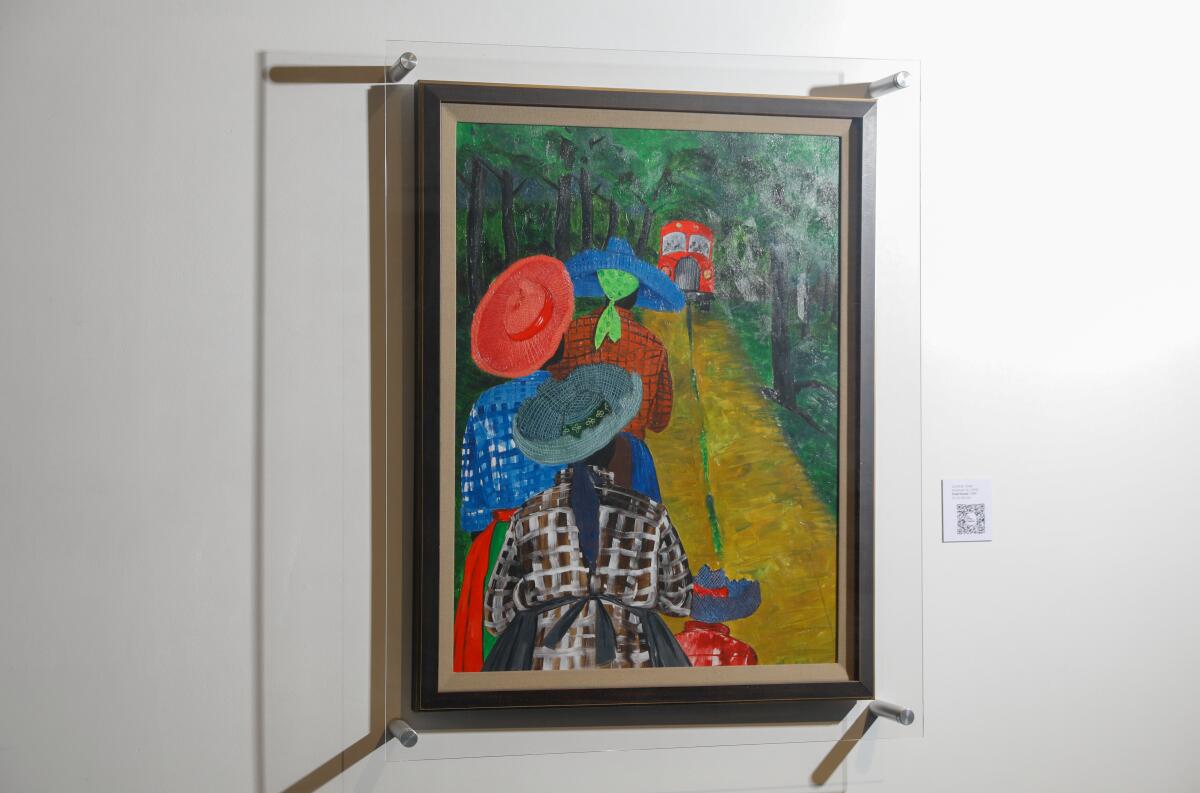
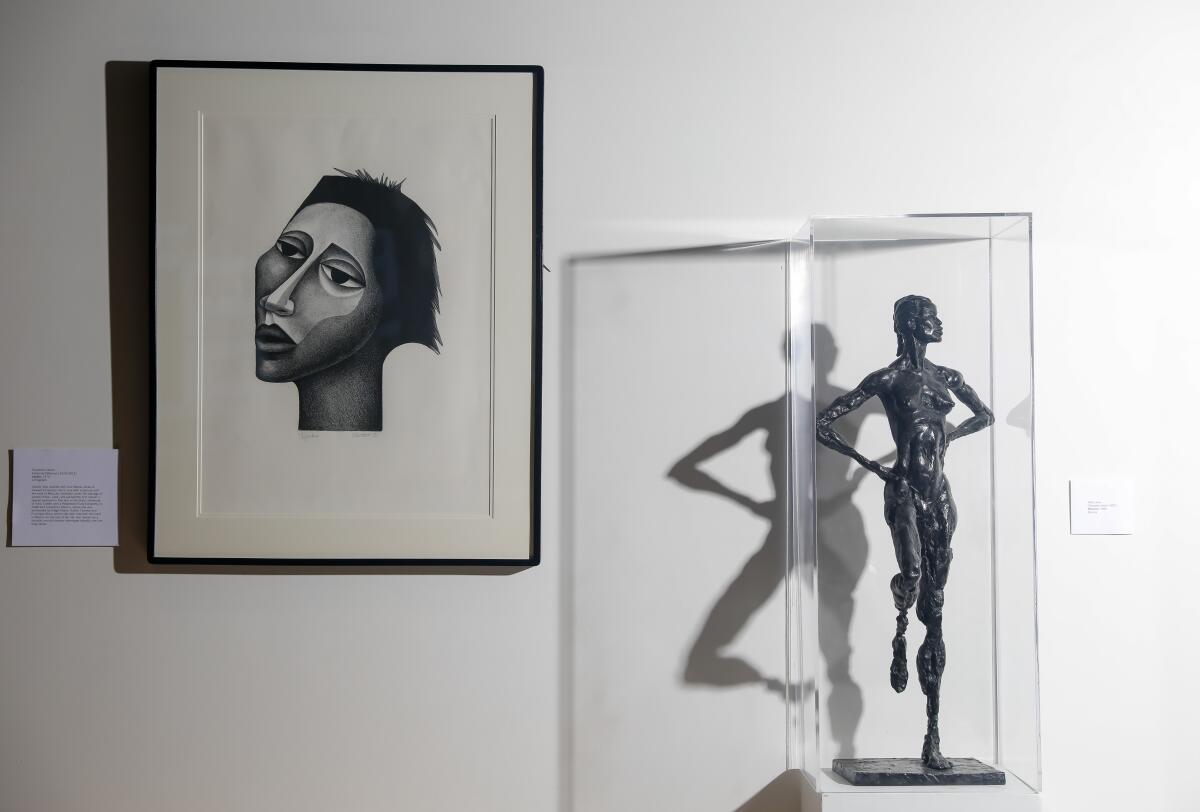
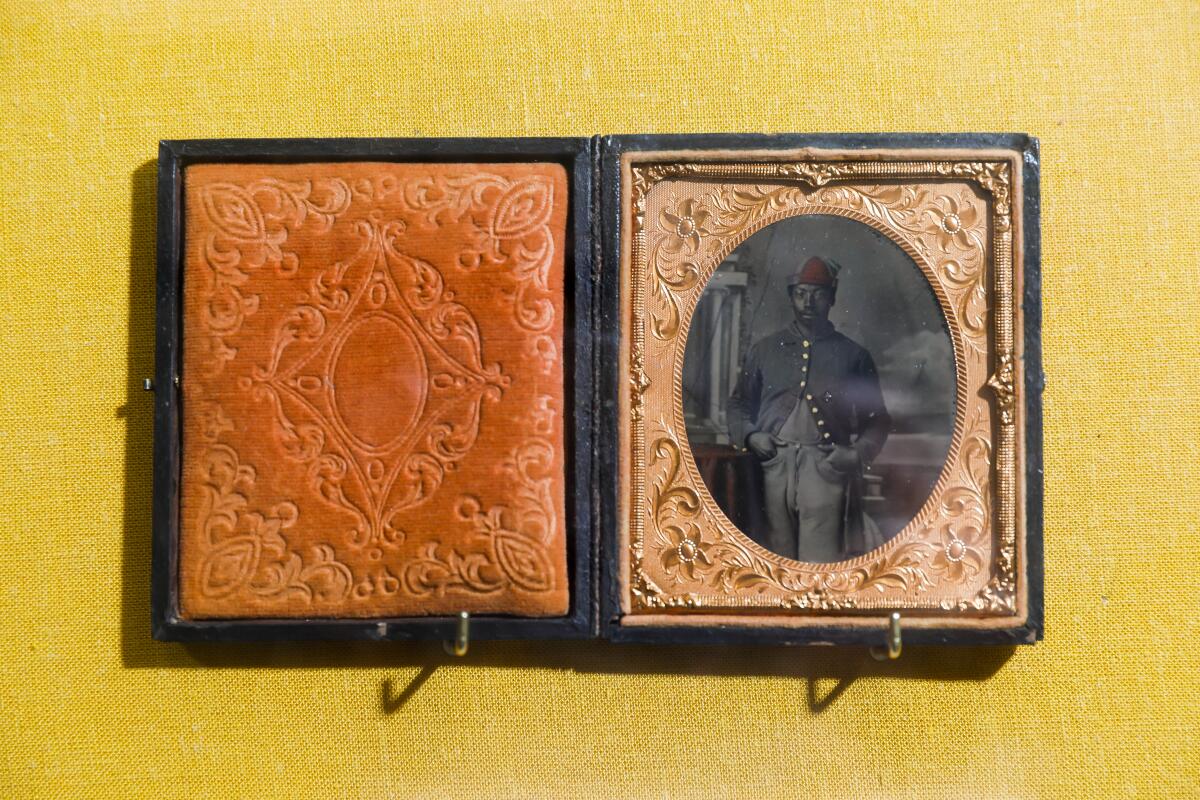
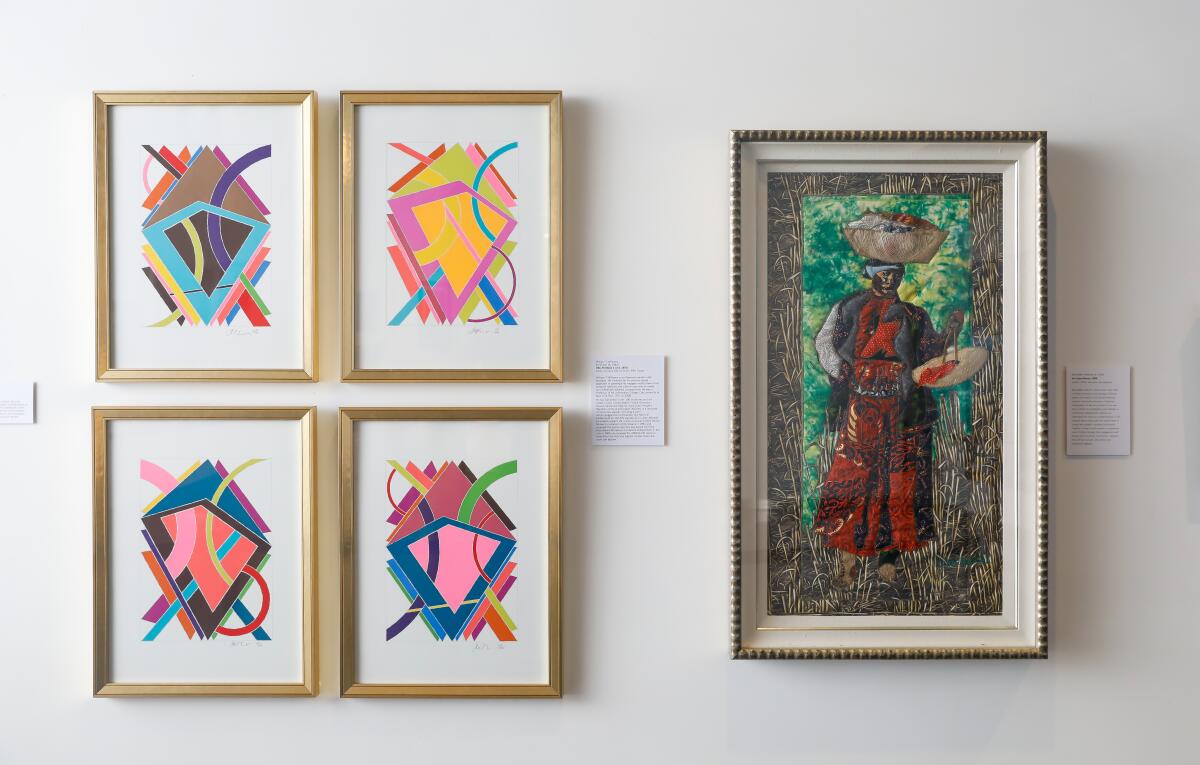
The biggest entertainment stories
Get our big stories about Hollywood, film, television, music, arts, culture and more right in your inbox as soon as they publish.
You may occasionally receive promotional content from the Los Angeles Times.